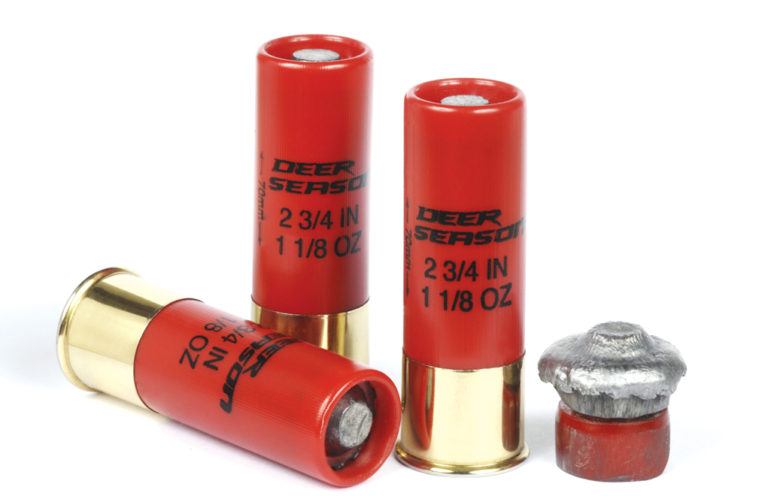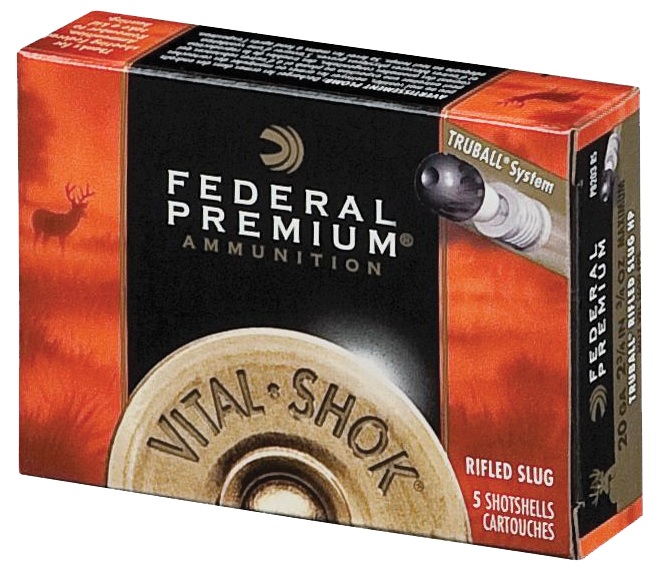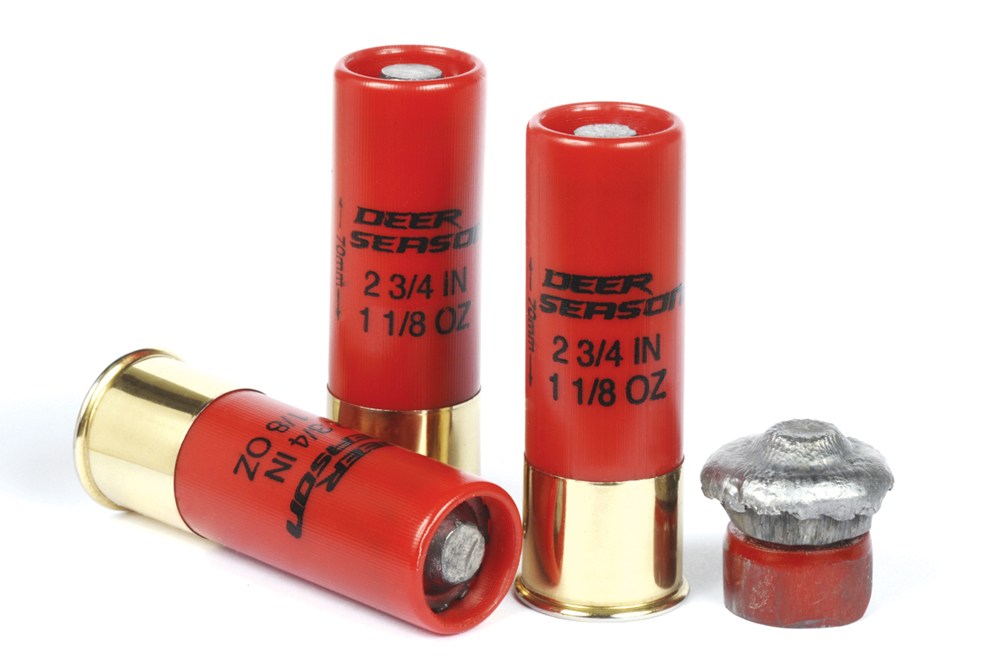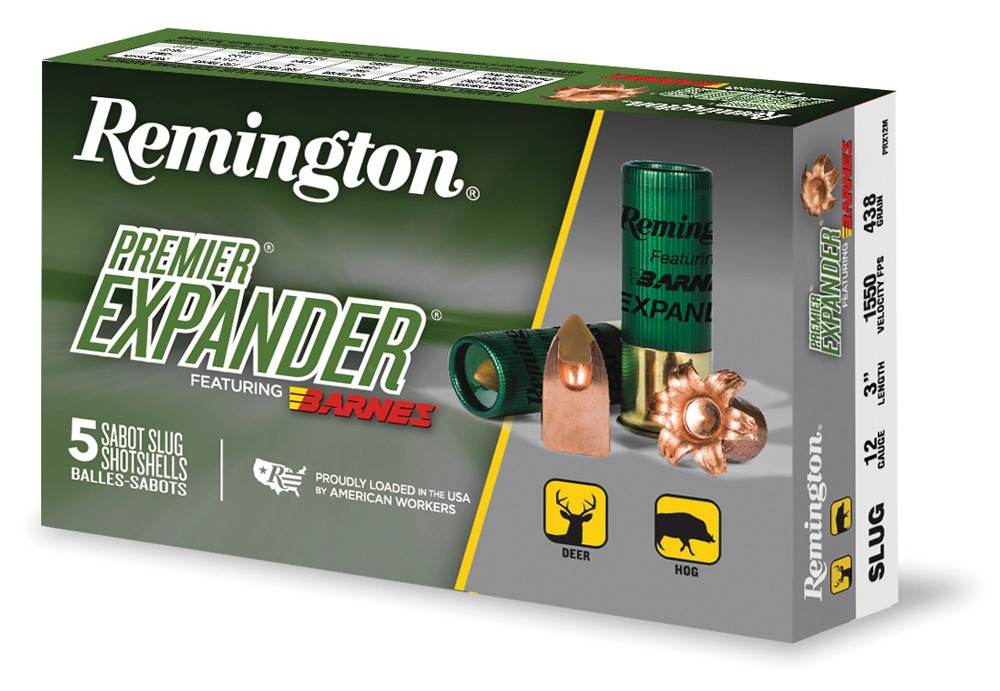
Modern-day shotgun slugs have had their own evolution and history, and as you may suspect, they’re not all created equal.
What styles of shotgun slugs are available today:
In general, there are two main types of shotgun slugs: Full-bore slugs, in essence, fill up most of the bore of the shotgun as they travel down the barrel, and sabot slugs that employ a plastic sabot to engage the rifling and then drop off after it leaves the barrel, much like a wad deviates from a load of birdshot in flight.
Foster Slugs

This is the original slug created to be fired in a smoothbore shotgun. Karl M. Foster started making them for neighbors in the early ‘30s as people were looking for something to knock down a deer to feed families during the Great Depression. Foster originally hand-cast these slugs and filed grooves on the side for rifling, which is much the same as Foster-type slugs appear today.
The Foster slug’s greatest characteristic is a hollow rear portion, which puts most of the weight near the tip of the slug. If the slug starts to yaw in flight, which they almost always do, the weight forward aspect is thought to bring the slug back into a straighter, more stable flight … much the same as a badminton shuttlecock or air rifle pellet works.
Foster slugs are also known as “American” slugs to distinguish them from European-type slugs such as the Brenneke. Rifling on the Foster slug gives it no gyroscopic spin advantage as barrel rifling does with a rifle bullet, but the grooves on the side of these shotgun slugs do allow for easier transition as they’re swaged down to pass through various chokes.
Foster slugs are capable of being fired through most shotgun chokes, rifled choke tubes and rifled shotgun barrels — though shooting a Foster through a rifled barrel will do little more than dramatically foul the rifling. Stay away from super-tight turkey chokes with any slug; at the very least, “pinching” will occur and group sizes will be measured in feet, not inches.
For reasons not clear to anyone, including me, gun writers in the era when Foster was around confused his name with the Forster Brothers who made reloading tools during this same period. So, sometimes you may see “Forster” when referring to the Foster-style slug.
Brenneke Slugs

The German Wilhelm Brenneke gave us the Brenneke slug in 1898. The chief variance from the Foster slug is that the Brenneke is solid and has a wad attached to the rear of the slug that remains on the slug after firing. The wad may be plastic, cellulose fiber or felt, and it gives the slug stabilization in flight.
Like the Foster, the grooves on the side of the Brenneke give it no spin stability but do help with moving into a choke with less deformation. The Brenneke slug is solid and gives more penetration with less deformity and is often chosen for dangerous animal applications, as well as some military and law enforcement needs.
Sabot Slugs

The shotgun slug that so many of us have trouble pronouncing (sab-oh, the “a” is short and the “t” is silent), a plastic sabot encases the slug and engages the barrel’s rifling, giving the slug much of the spin advantage of a rifle bullet. To be most effective, the sabot needs to drop from the slug as soon as possible after leaving the barrel, much like a birdshot wad.
Shotgun slugs came out of the dark ages with the advent of the sabot slug and rifled shotgun barrels. What we have now with sabots is, in effect, rifle bullets the size of shotgun slugs (.72 caliber for 12 gauge and .61 for 20 gauge). This is a huge piece of lead or copper cast downrange at the target. Ballistic-tip slugs slip through the air with a much greater ballistic coefficient than the punkin’ ball slugs of old, which means they fly farther with greater retained velocity. Many slug shooters will tell you that, with the right gun and slug combination, 200-yard shots are not out of the question.
Blast Through the Basics: All About Shotguns
- Best AR Style Shotgun – A Comprehensive Review
- Best 410 Pump Shotgun – A Buyer's Guide
- Best Over Under Shotgun – Affordable Doubles
- Best Home-Defense Shotguns
- Double Barrel Shotgun Reviews – Affordable Doubles
- What is an 8 Gauge Shotgun? Everything You Need to Know
- <Best Tactical Shotguns A Comprehensive Guide
- Lever Action Shotgun Reviews – The Past, Present And Future
- The Best Pump Action Shotgun Guide
- Bullpup Shotgun Buying Guide – Best Options for Self-Defense
Editor's Notes: This article originally appeared in the June 2018 issue of Gun Digest the Magazine.

Next Step: Get your FREE Printable Target Pack
Enhance your shooting precision with our 62 MOA Targets, perfect for rifles and handguns. Crafted in collaboration with Storm Tactical for accuracy and versatility.
Subscribe to the Gun Digest email newsletter and get your downloadable target pack sent straight to your inbox. Stay updated with the latest firearms info in the industry.

![Best Concealed Carry Guns In 2025 [Field Tested] Wilson Combat EDC X9S 1](https://gundigest.com/wp-content/uploads/Wilson-Combat-EDC-X9S-1-324x160.jpg)


![Best 9mm Carbine: Affordable PCCs [Tested] Ruger Carbine Shooting](https://gundigest.com/wp-content/uploads/Ruger-Carbine-Shooting-100x70.jpg)
![Best AR-15: Top Options Available Today [Field Tested] Harrington and Richardson PSA XM177E2 feature](https://gundigest.com/wp-content/uploads/Harrington-and-Richardson-PSA-XM177E2-feature-100x70.jpg)

Amazing blog! we have decided to buy some firearms before purchasing these firearms, we consult with Taap Outdoors about the firearms and we bought some tools from them. We got some information from some blogs and our experience was amazing.
Amazing blog! we have decided to buy some firearms before purchasing these firearms, we consult with Taap Outdoorsabout the firearms and we bought some tools from them. We got some information from some blogs and our experience was amazing.
Such a great blog We have decided to buy some ammunition before purchasing we consult with turners outdoorsman about the ammunition. We got some information from some blogs and our experience was amazing.
Amazing blog! we have decided to buy some firearms ammunition before purchasing this Ammunition, we consult with Desperate Measures about the firearms and we bought some tools from them. We got some information from some blogs and our experience was amazing.